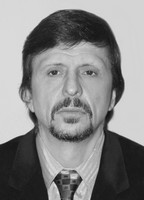Special features of intermuscular coordination in children with learning difficulties mastering purposive movements
Фотографии:
ˑ:
Teoriya i praktika fizicheskoy kultury №12 2016, pp. 35-37
UDC 796.01:612
Associate Professor, PhD V.F. Vorobyev1
Associate Professor, PhD L.N. Vinogradova1
Associate Professor, PhD O.L. Lekhanova1
S.V. Pyzh1
1Cherepovets State University, Cherepovets
e-mail: vovofo@mail.ru
The study showed that a forearm movement in 6 year old children with speech disorders is to a greater extent achieved by the biceps work as opposed to textbook notions of the muscles work when bending one’s arm at the elbow. However, children are able to learn to control their muscle tone and ensure intermuscular coordination when mastering purposive movements. Interference pattern electromyography reveals specific features of antagonist muscles work, providing individual assessment of the outcomes of children mastering purposive movements. Its use ensures a realization of one of the feedback types. More precise control of the forearm movement and intermuscular coordination improvement are ensured by the joint functioning of the antagonist muscles when mastering ball skills. Computer games without methodical support do not provide the required intermuscular coordination due to the emerging uncertainty and may result in incorrect movement patterns in children with learning difficulties. The study produced fundamentally new data revealing the nature of the biceps and triceps work when mastering purposive movements in children with speech disorders. It can serve as a starting point for further research in the field of comparative analysis of the abilities of children with learning difficulties accounted for by various health statuses.
Keywords: children with speech disorders, ball exercises, computer games, biofeedback.
References
- Buchilova I.A. Osobennosti razvitiya dvigatel'noy sfery detey starshego doshkol'nogo vozrasta v usloviyakh sensornoy deprivatsii (Specifics of development of motor functions of senior preschoolers under sensory deprivation) / I.A. Buchilova, V.F. Vorobyev, G.M. Galaktionova, A.S. Kulikova //Vestnik Cherepovetskogo gosudarstvennogo universiteta (Bulletin of Cherepovets State University). 2014. № 1 (54). P. 64-67.
- Vorobyev V.F. Individual'nye osobennosti regulyatsii aktivnosti myshts u detey doshkol'nogo vozrasta s razlichnym urovnem zdorov'ya (Specific features of muscular activity regulation in preschoolers with different levels of health) //Cherepovetskie nauchnye chteniya - 2014 (Cherepovets scientific sessions - 2014): Proc. of All-Rus. res.-pract. conf. Ed. K.A. Kharahnin. 2015. P. 67-69.
- Gorodnichev R.M. Sportivnaya elektroneyromiografiya (Sport electroneuromyography) / R.M. Gorodnichev. – Velikie Luki state acad. phys. culture. - Velikie Luki, 2005. – 230 p.
- Zaripova J.R. Neyromyshechny status nedonoshennykh detey pri nakozhnoy elektromiografii (Neuromuscular status of preemies under cutaneous electromyography) /J.R. Zaripova, A.Y. Meygal, I.I. Mebelova //Profilakticheskaya i klinicheskaya meditsina. 2011. № 3 (40). P. 322-325.
- Pyzh S.V. Programmno-apparatny kompleks dlya reabilitatsii detey s zabolevaniyami tsentral'noy nervnoy sistemy i oporno-dvigatel'nogo apparata «Gesis» (GESIS hardware-software complex for rehabilitation of children with diseases of central nervous system and musculoskeletal system) / S.V. Pyzh, V.M. Oskolkov, F.N. Popov //Arhivarius. 2016. V. 1. № 1 (5). P. 42-45.
- Sue D., Ray P., Talaei-Khoei A., Jonnagaddala J., Vichitvanichphong S. Assessing video games to improve driving skills: a literature review and observational study. doi:10.2196/games.3274 [Electronic resource]: http://games.jmir.org/2014/2/e5/
- Johnson T.M., Ridgers N.D., Hulteen R.M., Mellecker R.R., Barnett L.M. Does playing a sports active video game improve young children's ball skill competence? //J Sci Med Sport. 2016 May;19(5):432-436. doi: 10.1016/j.jsams.2015.05.002. [Electronic resource]: http://www.ncbi.nlm.nih.gov/pubmed/26050626
Received 30.06.2016 г.




 Журнал "THEORY AND PRACTICE
Журнал "THEORY AND PRACTICE